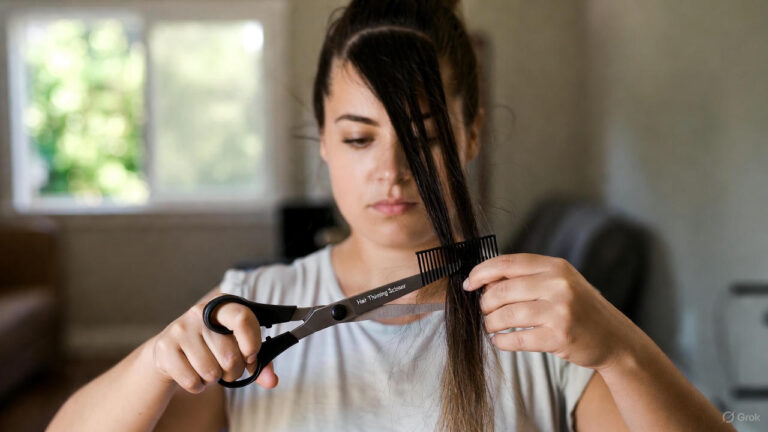Hair is much more than just a physical attribute; it carries profound cultural significance and serves as a powerful symbol of identity, status, and tradition.
Across the globe, hair and hairstyles have been used to communicate everything from social class to religious beliefs. The way individuals style and wear their hair can convey messages that are deeply intertwined with cultural heritage and personal identity.
In this article, we’ll explore the cultural importance of hair and hairstyles throughout history and across different cultures.
Hair as a Symbol of Identity
Hair often serves as an extension of personal identity, reflecting an individual’s cultural background, religious beliefs, and even political stance.
For example, in many African cultures, hairstyles such as braids, locs, and afros are more than just fashion statements—they are expressions of heritage and a connection to ancestors. These styles often carry deep meanings, symbolizing social status, age, and even marital status.
In the punk subculture, brightly colored and spiked hair became a symbol of rebellion and nonconformity.
Similarly, in religious contexts, hair can signify devotion; for instance, many Sikh men wear their hair uncut as a symbol of respect for the perfection of God’s creation.
In these ways, hair becomes a crucial aspect of how individuals present themselves to the world and how they are perceived by others.
Hairstyles and Social Status
Throughout history, hairstyles have been used to signify social status and rank within a community. In ancient Egypt, elaborate wigs and headdresses were worn by the elite to demonstrate their wealth and position. These wigs, often made from human hair and adorned with gold and jewels, were a clear indicator of social hierarchy.
In the Victorian era, women’s hairstyles were closely tied to their social status and marital status. Married women often wore their hair in elaborate updos, while young, unmarried women wore their hair down as a sign of youth and innocence.
Even today, certain hairstyles can still convey social messages, whether intentional or not. For example, in professional settings, well-groomed hair is often associated with competence and reliability.
The Role of Hair in Religious Practices
Hair also plays a significant role in various religious practices around the world. For many, it is a symbol of purity, devotion, or humility. In Hinduism, for example, devotees often shave their heads as an offering to the gods, symbolizing the renunciation of ego and attachment.
In contrast, many Rastafarians grow their hair into dreadhair as a spiritual act, rooted in biblical teachings that view hair as a sacred aspect of one’s identity.
Orthodox Jewish women often cover their hair with wigs or scarves after marriage, a practice rooted in modesty and respect for religious tradition.
Similarly, in many Muslim cultures, women wear hijabs to cover their hair as an expression of modesty and religious commitment. These practices highlight how hair is not just a personal attribute but also a significant aspect of religious expression and identity.
Hair as a Form of Resistance
Hair has also been used as a form of resistance against oppression and cultural erasure. During the Civil Rights Movement in the United States, the afro became a powerful symbol of Black pride and resistance to Eurocentric beauty standards.
By embracing natural hair, African Americans rejected societal pressures to conform to Western ideals of beauty and instead celebrated their cultural identity.
In some Native American cultures, cutting one’s hair was historically forced upon individuals as a way to assimilate them into Western society.
For many, reclaiming traditional hairstyles and long hair has become an act of cultural preservation and resistance to the erasure of Indigenous identities. Through hair, individuals and communities assert their right to self-expression and cultural heritage.
The Evolution of Hairstyles Over Time
Hairstyles have continuously advanced, influenced by cultural, social, and technological changes. In the early 20th century, the bob haircut became a symbol of women’s liberation, as it defied traditional norms of femininity and signaled independence.
The 1960s and 1970s saw the rise of long, flowing hair as a symbol of countercultural movements, representing freedom and rebellion against mainstream values.
Today, the influence of social media and global connectivity has led to the rapid spread of hairstyle trends across cultures. Hairstyles that were once unique to specific regions or groups are now embraced globally, leading to a blending and reshaping of cultural symbols.
Despite this, the cultural significance of hair remains deeply rooted, with individuals continuing to use hairstyles to express their identities and connect with their heritage.
Conclusion
Hair and hairstyles are far more than mere aesthetic choices; they are powerful symbols that carry deep cultural significance. Whether reflecting identity, social status, religious beliefs, or resistance, hair is a form of communication that transcends time and geography. Understanding the cultural importance of hair allows us to appreciate the diverse ways in which people express themselves and connect with their heritage through their hairstyles.
Frequently Asked Questions (FAQs)
1. Why is hair important in different cultures?
Hair is important in different cultures because it serves as a symbol of identity, social status, religious beliefs, and even resistance. It communicates cultural heritage and personal values, making it a powerful form of self-expression.
Hairstyles can reflect social status by indicating wealth, rank, or marital status. Historically, elaborate hairstyles or wigs were often reserved for the elite, while simpler styles were associated with lower social classes.
3. What is the significance of religious hair practices?
Religious hair practices, such as shaving, covering, or growing hair, are often symbolic acts of devotion, humility, or respect for religious traditions. These practices vary widely across different religions and cultures.
4. How has the perception of natural hair advanced over time?
The perception of natural hair has advanced significantly, especially in the context of the Civil Rights Movement, when embracing natural hair became a symbol of Black pride and resistance to societal pressures to conform to Eurocentric beauty standards.
5. How do modern hairstyles connect with cultural heritage?
Modern hairstyles often connect with cultural heritage by preserving traditional styles or symbols while also adapting to contemporary trends. This blending of old and new allows individuals to express their identity in a way that honors their cultural roots.



